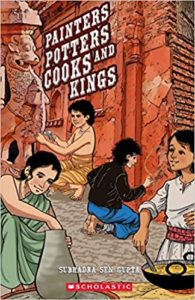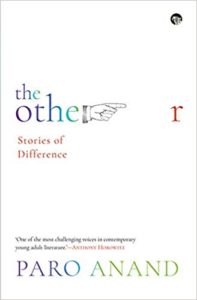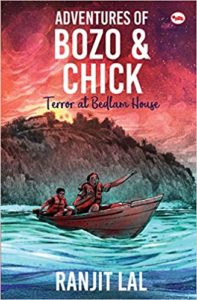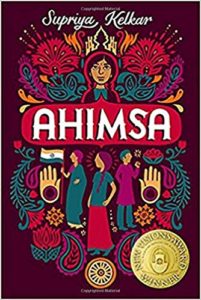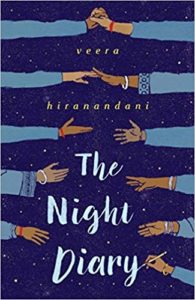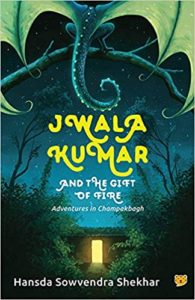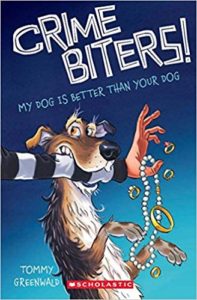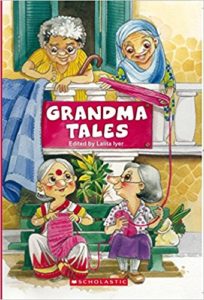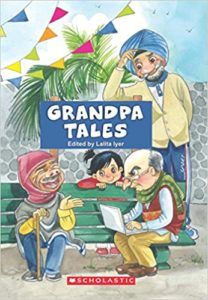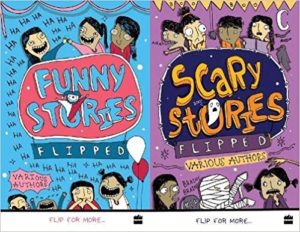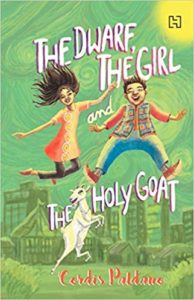An interview with Cordis Paldano
Cordis Paldano’s debut novel for children The Dwarf, The Girl and the Holy Goat is a must read. Story apart, the pace, the rhythm, the storytelling – everything comes together stupendously. This is a new voice to look out for in the coming years.
Here is an interview conducted via email:
1. What is it about storytelling that fascinates you?
CP: For me, a good story is one that draws the audience in… It removes them from the banality of their everyday lives and transports them to another world. It moves them, outrages them, delights them… and then when the story is over and behind you, you are a little bit wiser than before.
We may not always succeed but I think that is what storytellers aim for. Because we have all been in the audience and we have all had great stories told to us and because you want the play to go on, at some point you get up and start telling a story of your own, because you don’t want to break the spell and because you really think that this is the most valuable thing you can do with your life – tell a story well.
I think of storytelling as a vocation, a calling, so I tend not to put it on a pedestal. But what I really find fascinating about it is how pervasive, ubiquitous and absolute it is! Honestly, I don’t really know if there is anything is this world which is not a story! Who you are is a story, your country is a story, your religion is a story… (This is not to deny the validity or the truths contained within those stories…on the contrary!)
I love the story you’d written some time ago of your little girl coping with the death of her great-grandmother. If I remember correctly, she finally comes to terms with her absence by concluding that her badi nani has become a bright star in the sky. The story never fails to move me for a host of reasons, but it also illustrates two things beautifully. One, that stories are how we make sense of the world around us and two, when we’re dead and gone, that is all that will remain of us, we shall have become stories too, to those left behind.
2. How does your work in theatre inform your novel writing? What kind of theatre do you specialise in?
CP: I do not do theatre any more. But for ten years of my life (soon after passing out of school), theatre is nearly all that I did. I am very much a child of theatre and so yeah, it does inform my novel writing in a big way. I approach writing the way a good actor approaches theatre — give centre stage to the characters and then wait patiently for them to tell their stories through you.
I guess the kind of theatre we specialised in could be called ‘Physical Theatre’ though we ourselves never used such jargon. The actors told stories mainly through their bodies. Make-up, costumes, sets and dialogues were all secondary, the primary storytelling tool was the actor’s body. So naturally all the actors received frequent training in Kathakali, Kalaripayattu and Therukoothu. The theatre company that I used to be a part of – Indianostrum Théâtre, continues to stage plays in Pondicherry under the aegis of the brilliant Franco-Indian director Koumarane Valavane. When we started out, Indianostrum was nothing more than a rundown shed near the beach, and now, it has become an indelible part of the cultural landscape of Pondicherry!
3. Would you venture into adult fiction as well?
CP: Oh yeah, for sure, in a decade or two… once I’ve written some good children’s books!
4. What drew you to children’s literature?
CP: I love children and I understand them best. I know dozens of kids who are crazy about books whereas I hardly ever meet an adult who gets excited about novels. So as far as I’m concerned, I don’t understand why any author would bother to write for adults at all!
Jokes apart, because I grew up speaking many languages (like most Indians do), the choice to write in English was neither obvious nor easy. Children’s literature still allows you to get away with a less than adequate grasp of the language. Of course, the quality of language matters in children’s fiction, but I don’t think authors necessarily have to master the language. Another reason I write for children is because the narrative structure of children’s novels closely resembles the Aristotelian dramatic structure that I am more familiar with.
5. Every storyteller has a soft corner for a particular kind of story. There is a vast gamut of stories to be told but what are the few you wish to play with and retell?
CP: I’m not really sure, I’m still discovering myself as a writer. When I started writing my first novel, all I originally had were the true stories of three women from three different countries – one was a child, another a young lady and the third an old woman – I was inspired by these three women and really wanted to share their stories with others! So I then went on to weave a larger narrative encompassing these three stories — the story of a girl seeking to save her mother and rescue her goat, and this little girl draws strength from these three stories in her moments of crisis. And by the way, the central characters of my second and third novels (still in progress) are also strong-willed girls, so I think maybe that’s a story that I’d like to tell. Stories with strong female protagonists. Another theme that has emerged consistently in all three of the novels (much to my surprise) is collective violence. At some pivotal point in each of the three works, a mob goes berserk and threatens the safety of the main characters. So ‘collective violence’ also is a theme that I’m perhaps interested in or I don’t know… maybe that theme is just a reflection of the times we live in!
6. Does the medium of communication impact the story being told? Do you make minor changes to your styles of narration depending on the medium?
CP: Oh yes, each medium is like a language of its own. So a story told on the stage would be very different from a story written on paper. Usually, the story grows organically from the medium and I’ve so far never had to translate a story from one medium to another. But if I had to, I guess major changes would be required – you’d have to rethink the story in the new language.
7. Would you ever explore film to tell stories and I do not necessarily mean a mere recording of your story performances?
CP: What a delightful idea! I’d love to explore film but before that I’d like to gain some mastery over the craft of writing that I’ve just ventured into… By all appearances, it seems like it will take anyone a few lifetimes before they can achieve some level of mastery in this craft!
8. How do you work on the voices of the characters? Do they play out as you write them out or do you see them first as dramatized versions before writing them?
CP: Hmm…character voices… I don’t think I’m particularly good at it and it’s an area that I’d like to work on but I don’t really know how, because yes, I see the characters and the story as a dramatized version before writing them. Plot, setting, characters and their voices, all come in a large ‘take it or leave it’ bundle and I don’t know yet how to delicately unwrap the bundle, perform a surgical strike and then seal it up again. Maybe I’ll learn or better still – I won’t have to learn, it’ll all get better on its own as time goes on!
9. The pace and timing of your debut novel for children The Dwarf, The Girl and the Holy Goat is superb. Did you test parts of it on younger readers before publishing?
CP: Thank you! Your words mean a lot to me… No, it wasn’t tested on younger
readers before publishing.
10. What next?
CP: I’m very familiar with the Mahabharata but not so much the story of Ram. And so I decided to go through Valmiki’s Ramayana and as I was reading it, I got the idea for my second novel – the story of a little girl who absolutely wants to play the role of Ram in her school’s Ram Leela. Her story is interspersed with tales from the Ramayana, of the adventures of Hanuman and others.
1 June 2019

